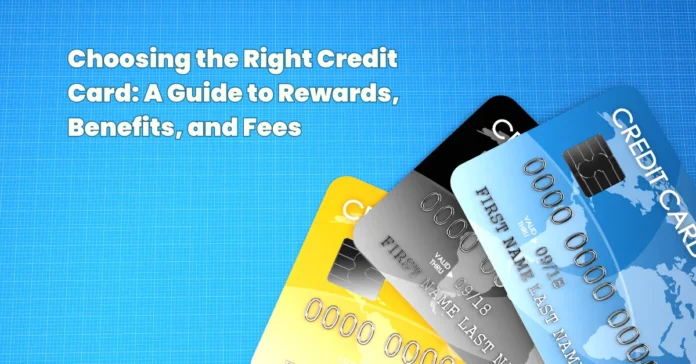In today’s world, credit cards have become an essential part of our financial lives. They offer convenience, flexibility, and a way to build credit history. However, with so many options available, choosing the right credit card can be overwhelming. This guide will walk you through the key factors to consider when selecting a credit card that aligns with your needs and financial goals.
Understanding Your Spending Habits
Before diving into the world of credit cards, take a moment to evaluate your spending patterns. Consider the following questions:
- What are your primary spending categories? (e.g., travel, dining, groceries, gas)
- How often do you use credit cards?
- Do you pay your balance in full each month?
- What are your financial goals? (e.g., cashback, rewards, building credit)
Answering these questions will help you narrow down your options and choose a card that complements your lifestyle.
Types of Credit Cards
Credit cards come in various forms, each designed to cater to different needs and preferences. Here are some common types:
- Rewards Cards: These cards offer points, miles, or cashback for every dollar you spend. They are ideal for those who want to earn rewards on their everyday purchases.
- Travel Cards: Geared towards frequent travelers, these cards offer benefits like airport lounge access, free checked bags, and travel insurance.
- Cashback Cards: These cards provide a percentage of cashback on your purchases, which can be redeemed as a statement credit or direct deposit.
- Balance Transfer Cards: These cards offer a low introductory APR for a limited time, making them suitable for consolidating high-interest debt.
- Student Cards: Designed for college students, these cards often come with lower credit limits and incentives to build credit responsibly.
Key Factors to Consider
- Annual Percentage Rate (APR): This is the interest rate you’ll be charged on any outstanding balance. Opt for a card with a low APR, especially if you tend to carry a balance.
- Fees: Pay close attention to various fees, such as annual fees, late payment fees, and foreign transaction fees. Choose a card with minimal fees to avoid unnecessary costs.
- Rewards Program: If you’re interested in earning rewards, carefully evaluate the program’s terms and conditions. Consider the earning rate, redemption options, and any restrictions.
- Credit Limit: Your credit limit is the maximum amount you can borrow on your card. Choose a limit that aligns with your spending habits and financial responsibility.
- Benefits and Perks: Some cards offer additional benefits like purchase protection, extended warranties, and travel insurance. Consider these perks when making your decision.
Tips for Choosing the Right Card
- Compare Offers: Don’t settle for the first card you see. Compare offers from different issuers to find the best fit for your needs.
- Read the Fine Print: Before applying, carefully review the card’s terms and conditions, including fees, interest rates, and reward program details.
- Check Your Credit Score: Your credit score plays a significant role in your eligibility for certain cards. Ensure your credit score meets the requirements before applying.
- Start Small: If you’re new to credit cards, consider starting with a basic card and gradually building your credit history.
- Use Responsibly: Always make timely payments and keep your credit utilization low to avoid damaging your credit score.
Conclusion
Choosing the right credit card is a crucial step towards financial well-being. By understanding your spending habits, considering the key factors mentioned above, and comparing offers, you can find a card that aligns with your needs and helps you achieve your financial goals. Remember to use your credit card responsibly and enjoy the benefits it offers.
#creditcards #creditcardtips #creditcardguide #financialliteracy #personalfinance #moneytips #moneymanagement


